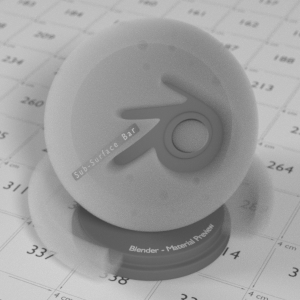Dispersión volumétrica¶

El nodo Dispersión volumétrica permitirá que la luz sea dispersada a medida que atraviese un volumen. Un uso típico podrá ser el de agregar niebla a una escena. También podrá ser usado en conjunto con el nodo Absorción volumétrica para crear humo.
Entradas¶
- Color
Scattering coefficients per color channel.
- Densidad
La densidad del efecto de dispersión.
- Anisotropy Henyey-Greenstein Draine
Controls the relative amount of backward and forward scattering.
- IOR Fournier-Forand
Refractive index of the scattering particles relative to water. Common ocean waters range between 1.0 and 1.2, while turbid waters with higher density of particles have higher IORs.
- Backscatter Fournier-Forand
Fraction of light that is scattered backwards. Most oceanic particles have backscatter values between 0.001 (e.g., very large phytoplankton) and 0.1 (e.g., very small mineral particles), pure water has a backscatter of 0.5. Values taken from Ocean Optics Web Book.
- Alpha Draine
Blending factor between Henyey-Greenstein (\(\alpha = 0\)) and Cornette & Shanks (\(\alpha = 1\)) phase functions.
- Diameter Mie
Diameter of the scattering particles in µm.
Propiedades¶
- Fase
Volume scattering phase function.
- Henyey-Greenstein:
Simple and widely used phase function, useful for approximating scattering in biological tissues.
- Fournier-Forand:
Cycles Only Suitable for modeling the scattering of light in underwater environments.
- Draine:
Cycles Only Suitable for modeling the scattering of interstellar dust.
- Rayleigh:
Cycles Only Describes the scattering by particles with a size smaller than the wavelength of light, such as the scattering of sunlight in earth’s atmosphere.
- Mie:
Cycles Only Describes the scattering by particles with a size larger than the wavelength of light, such as cloud and fog.
Truco
These phase functions can be combined using a Mezclar sombreadores.
Volume scattering phase as a function of angles between the incoming and the outgoing direction, in logarithmic scale. Light comes from the left side.¶
Salidas¶
Ejemplos¶

Ejemplo de Dispersión volumétrica.¶